A New Method for Evaluating Natural Gas Pipelines Based on ICEEMDAN-LMS: A View of Noise Reduction in Defective Pipelines
Abstract
:1. Introduction
2. Materials and Methods
2.1. ICEEMDAN Decomposition Method
- (a)
- For any signal to be analyzed, it can be decomposed into several different basic signal components; whether the component is linear or non-linear, there are equal extreme points and zero crossing points. The component also needs to satisfy the constraint conditions that the local symmetry is 0 and the mean value is 0.
- (b)
- For a certain point in time, the basic signal components decomposed in the signal to be analyzed can be reconstructed with certain rules to restore the signal to be analyzed. The instantaneous frequency of the signal to be analyzed can be obtained only when all the basic signal components are decomposed. Here, each of the underlying signal components is an intrinsic mode function.
- (1)
- Add noise with a mean and variance of 0 and 1, respectively, to the original pipeline signal x to construct a new pipeline signal xi and calculate the local mean of the signal using EMD to obtain a component ri and several IMF components [29]. Equations (1)–(3) represent the denoted signals, first-order residuals, and first-order IMF components, respectively. The ICEEMDAN method can effectively remove the residual noise and mode aliasing that may exist in the IMF components of the EMD and EEMD algorithms. This is expressed as follows:where is a function that describes the value of the signal at different times, and is the independent variable; represents Gaussian white noise, where i = 1, 2… n; represents the noise coefficient; and represents the reciprocal of the expected SNR between the first noise signal and the analyzed signal. Moreover, i represents the number of times noise is added and is the standard deviation operator. Finally, is the k-th mode obtained by EMD, represents the local mean value used for the production signal, and denotes averaging the whole.
- (2)
- Add a group of Gaussian white noises to the first-order residual to construct a new signal to be decomposed and obtain the second-order residual and second IMF component using EMD as follows:
- (3)
- Similarly, in the k-th order mode, calculate:
- (4)
- Step (3) is repeated until the residual component meets the termination condition or the modal component is less than the local extreme value of the first three orders, and the algorithm outputs all obtained residual and IMF components.
2.2. LMS Method
2.3. Improved LMS Algorithm
3. Results
3.1. Improved LMS Algorithm
3.2. Pipeline Defect Simulation Signal Analysis
4. Experimental Verification
5. Conclusions
- In this study, by adjusting and improving the step size of LMS, the convergence speed of weights is accelerated and the steady-state error of the algorithm is reduced.
- The superior performance of this method compared with existing methods is verified by simulating pipeline defect signals. The experimental results show that the proposed algorithm can effectively preserve the defect signal and suppress the pipeline noise.
- Compared with the traditional pipeline signal denoising method, the ICEEMDAN-LMS method can improve the signal-to-noise ratio by 6.74% and reduce the root-mean-squared error by 4.36%. The ICEEMDAN-LMS denoising method has the highest signal-to-noise ratio and the lowest RMSE. As a result, ICEEMDAN-LMS improves the signal-to-noise ratio and root-mean-squared error, resulting in a better pipeline noise reduction.
Author Contributions
Funding
Institutional Review Board Statement
Informed Consent Statement
Data Availability Statement
Conflicts of Interest
References
- Wang, T.X. Characterization of pipeline defect in guided-waves based inspection through matching pursuit with the optimized dictionary. NDT E Int. 2013, 54, 171–182. [Google Scholar]
- Afzal, M.; Polikar, R.; Udpa, L.; Udpa, S. Adaptive noise cancellation schemes for magnetic flux leakage signals obtained from gas pipeline inspection. Acoust. Speech Signal Proc. 2001, 5, 3389–3392. [Google Scholar]
- Chen, Y.; Zhang, L.; Hu, J.; Liu, Z.; Xu, K. Emergency response recommendation for long-distance oil and gas pipeline based on an accident case representation model. J. Loss Prev. Process Ind. 2022, 77, 104779. [Google Scholar] [CrossRef]
- Chen, Y.; Zhang, L.; Hu, J.; Chen, C.; Fan, X.; Li, X. An emergency task recommendation model of long-distance oil and gas pipeline based on knowledge graph convolution network. Process Saf. Environ. Prot. 2022, 167, 651–661. [Google Scholar] [CrossRef]
- Yan, X.; Wu, Z.; Wang, H. Network noise control under speed limit strategies using an improved bilevel programming model. Transp. Res. Part D Transp. Environ. 2023, 121, 103805. [Google Scholar] [CrossRef]
- Wang, H.; Zhang, X.; Jiang, S. A Laboratory and Field Universal Estimation Method for Tire–Pavement Interaction Noise (TPIN) Based on 3D Image Technology. Sustainability 2022, 14, 12066. [Google Scholar] [CrossRef]
- Hammel, S.-M. A noise reduction method for chaotic systems. Phys. Lett. A 1990, 148, 421–428. [Google Scholar] [CrossRef]
- Almeida, L.-B. The fractional fourier transform and time-frequency representation. IEEE Trans. Signal Process. 1994, 42, 3084–3091. [Google Scholar] [CrossRef]
- Pratt, W.-K. Generalized wiener filtering computation techniques. IEEE Trans. Comput. 1972, 100, 636–641. [Google Scholar] [CrossRef]
- Kalman, R.E. A new approach to linear filtering and prediction problems. J. Basic Eng. Trans. ASME 1960, 82, 35–45. [Google Scholar] [CrossRef]
- Li, F.; Zhang, B.; Verma, S.; Marfurt, K.-J. Seismic signal denoising using thresholded variational mode decomposition. Explor. Geophys. 2017, 49, 450–461. [Google Scholar] [CrossRef]
- Guo, T.; Deng, Z.-M. An improved EMD method based on the multi-objective optimization and its application to fault feature extraction of rolling bearing. Appl. Acoust. 2017, 127, 46–62. [Google Scholar] [CrossRef]
- Wang, J.; Du, G.; Zhu, Z.; Shen, C.; He, Q. Fault diagnosis of rotating machines based on the EMD manifold. Mech. Syst. Signal Process. 2020, 135, 106443. [Google Scholar] [CrossRef]
- Li, X.; Li, Z.; Wang, E.; Feng, J.; Kong, X.; Chen, L.; Li, B.; Li, N. Analysis of natural mineral earthquake and blast based on Hilbert–Huang transform (HHT). J. Appl. Geophys. 2016, 128, 79–86. [Google Scholar] [CrossRef]
- Lu, W.; Liang, W.; Zhang, L.; Liu, W. A novel noise reduction method applied in negative pressure wave for pipeline leakage localization. Process Saf. Environ. Prot. 2016, 104 Pt A, 142–149. [Google Scholar] [CrossRef]
- Sha, D.; Liang, W.; Wu, L. A novel noise reduction method for natural gas pipeline defect detection signals. J. Nat. Gas Sci. Eng. 2021, 96, 104335. [Google Scholar] [CrossRef]
- Wang, T.; Zhang, M.; Yu, Q.; Zhang, H. Comparing the applications of EMD and EEMD on time–frequency analysis of seismic signal. J. Appl. Geophys. 2012, 83, 29–34. [Google Scholar] [CrossRef]
- Li, J.; Liu, C.; Zeng, Z.; Chen, L. GPR Signal Denoising and Target Extraction with the CEEMD Method. IEEE Geosci. Remote Sens. Lett. 2015, 12, 1615–1619. [Google Scholar]
- Torres, M.E.; Colominas, M.A.; Schlotthauer, G.; Flandrin, P. A complete ensemble empirical mode decomposition with adaptive noise. In Proceedings of the 2011 IEEE International Conference on Acoustics, Speech and Signal Processing (ICASSP), Prague, Czech Republic, 22–27 May 2011; pp. 4144–4147. [Google Scholar]
- AL-Musaylh, M.S.; Deo, R.C.; Li, Y.; Adamowski, J.F. Two-phase particle swarm optimized-support vector regression hybrid model integrated with improved empirical mode decomposition with adaptive noise for multiple-horizon electricity demand forecasting. Appl. Energy 2018, 217, 422–439. [Google Scholar] [CrossRef]
- Ibrahim, G.; Albarbar, A.; Abouhnik, A. Adaptive filtering based system for extracting gearbox condition feature from the measured vibrations. Measurement 2013, 46, 2029–2034. [Google Scholar] [CrossRef]
- Elasha, F.; Mba, D.; Ruiz-Carcel, C. A comparative study of adaptive filters in detecting a naturally degraded bearing within a gearbox. Mech. Syst. Signal Process. 2016, 3, 1–8. [Google Scholar] [CrossRef]
- Sahoo, S.; Das, J.-K. Application of adaptive wavelet transform for gear fault diagnosis using modified-LLMS based filtered vibration signal. Recent Adv. Electr. Electron. Eng. 2019, 12, 257–262. [Google Scholar] [CrossRef]
- Boudraa, A.-O.; Cexus, J.-C. EMD-Based Signal Filtering. IEEE Trans. Instrum. Meas. 2007, 56, 2196–2202. [Google Scholar] [CrossRef]
- Wu, Z.H.; Huang, N.E. Ensemble empirical mode decomposition: A noise-assisted data analysis method. Adv. Adapt. Data Anal. 2011, 1, 1–41. [Google Scholar] [CrossRef]
- Yeh, J.-R.; Shieh, J.-S.; Huang, N.-E. Complementary ensemble empirical mode decomposition: A novel noise enhanced data analysis method. Adv. Adapt. Data Anal. 2010, 2, 135–156. [Google Scholar] [CrossRef]
- Dang, S.; Li, L.; Wang, Q.; Wang, K.; Cheng, P. Fiber optic gyro noise reduction based on hybrid CEEMDAN-LWT method. Measurement 2020, 161, 107865. [Google Scholar]
- Ali, M.; Prasad, R. Significant wave height forecasting via an extreme learning machine model integrated with improved complete ensemble empirical mode decomposition. Renew. Sustain. Energy Rev. 2019, 104, 281–295. [Google Scholar] [CrossRef]
- Jiang, Z.; Che, J.; Wang, L. Ultra-short-term wind speed forecasting based on EMD-VAR model and spatial correlation. Energy Convers. Manag. 2021, 250, 114919. [Google Scholar] [CrossRef]
- Slock, D. On the convergence behavior of the LMS and the normalized LMS algorithms. IEEE Trans. Signal Process. 1993, 41, 2811–2825. [Google Scholar] [CrossRef]
- Yang, Z.; Huo, L.; Wang, J.; Zhou, J. Denoising low SNR percussion acoustic signal in the marine environment based on the LMS algorithm. Measurement 2022, 202, 111848. [Google Scholar] [CrossRef]
- Laid, C.; Saad, B. A new pre-whitening transform domain LMS algorithm and its application to speech denoising. Signal Process. 2017, 130, 118–128. [Google Scholar]
- Luukko, P.-J.-J.; Helske, J.; Räsänen, E. Introducing libeemd: A program package for performing the ensemble empirical mode decomposition. Comput. Stat. 2016, 31, 545–557. [Google Scholar] [CrossRef]
- Xu, L.; Su, H.; Cai, D.; Zhou, R. RDTS Noise Reduction Method Based on ICEEMDAN-FE-WSTD. IEEE Sens. J. 2022, 22, 17854–17863. [Google Scholar] [CrossRef]
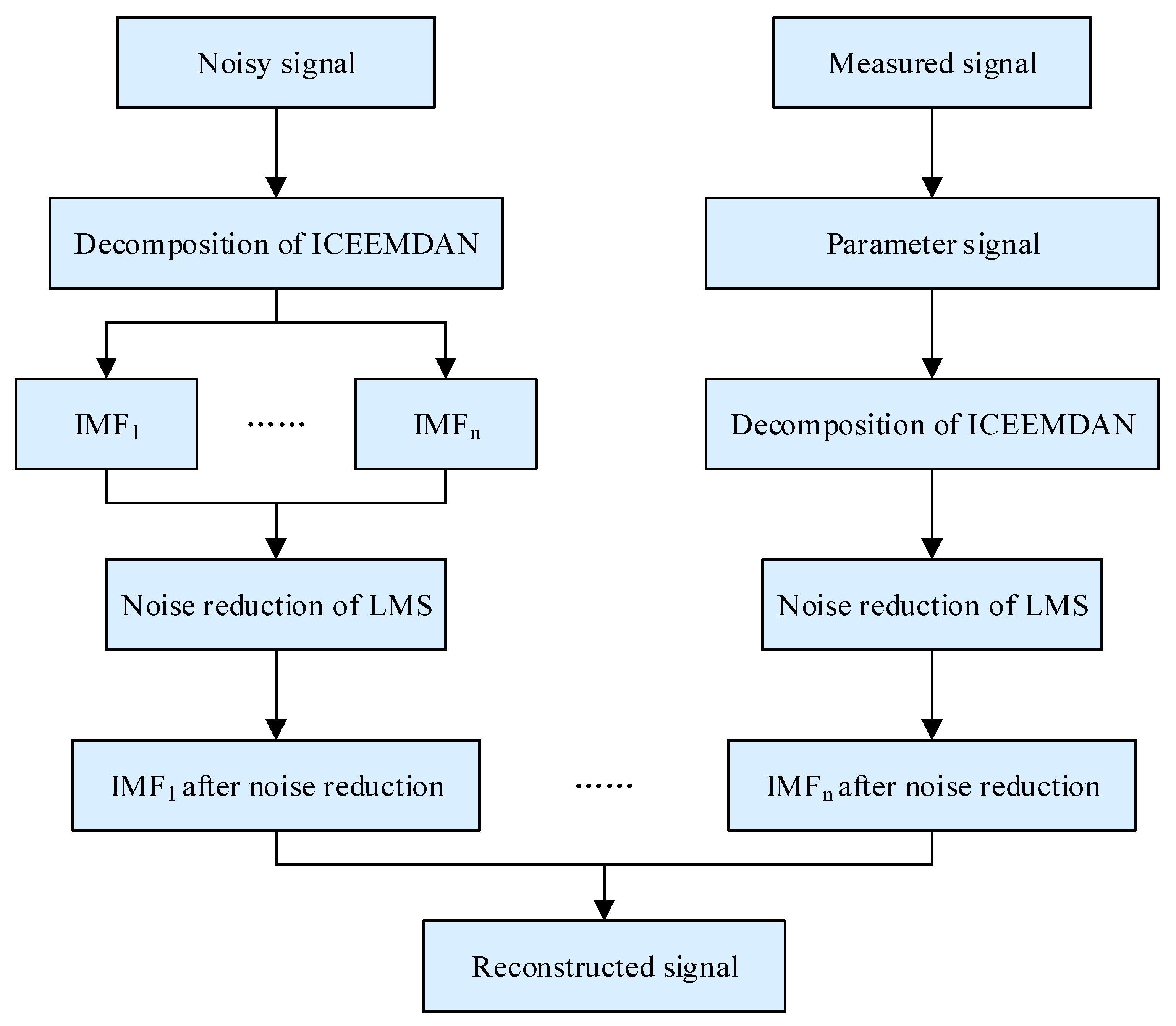



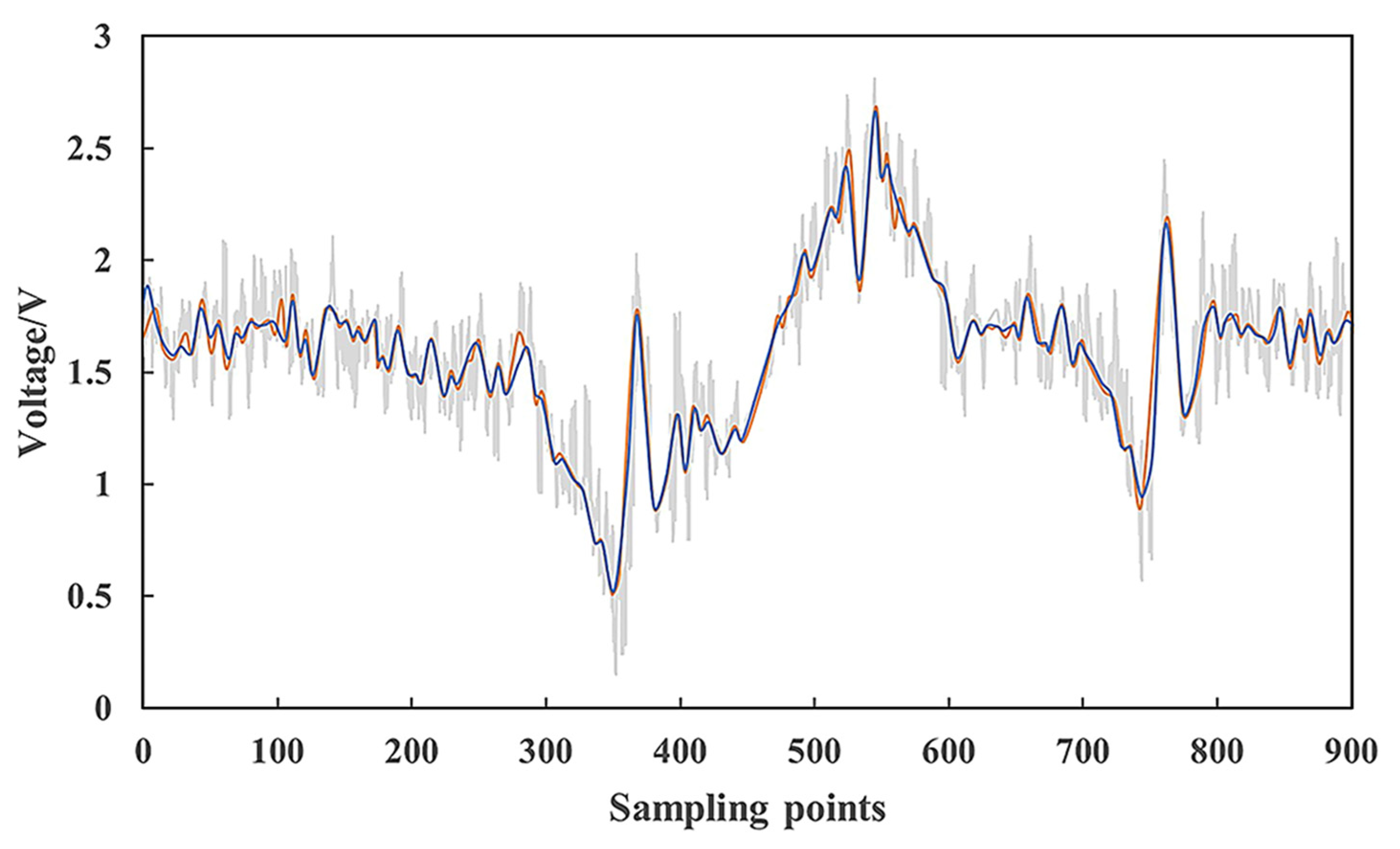
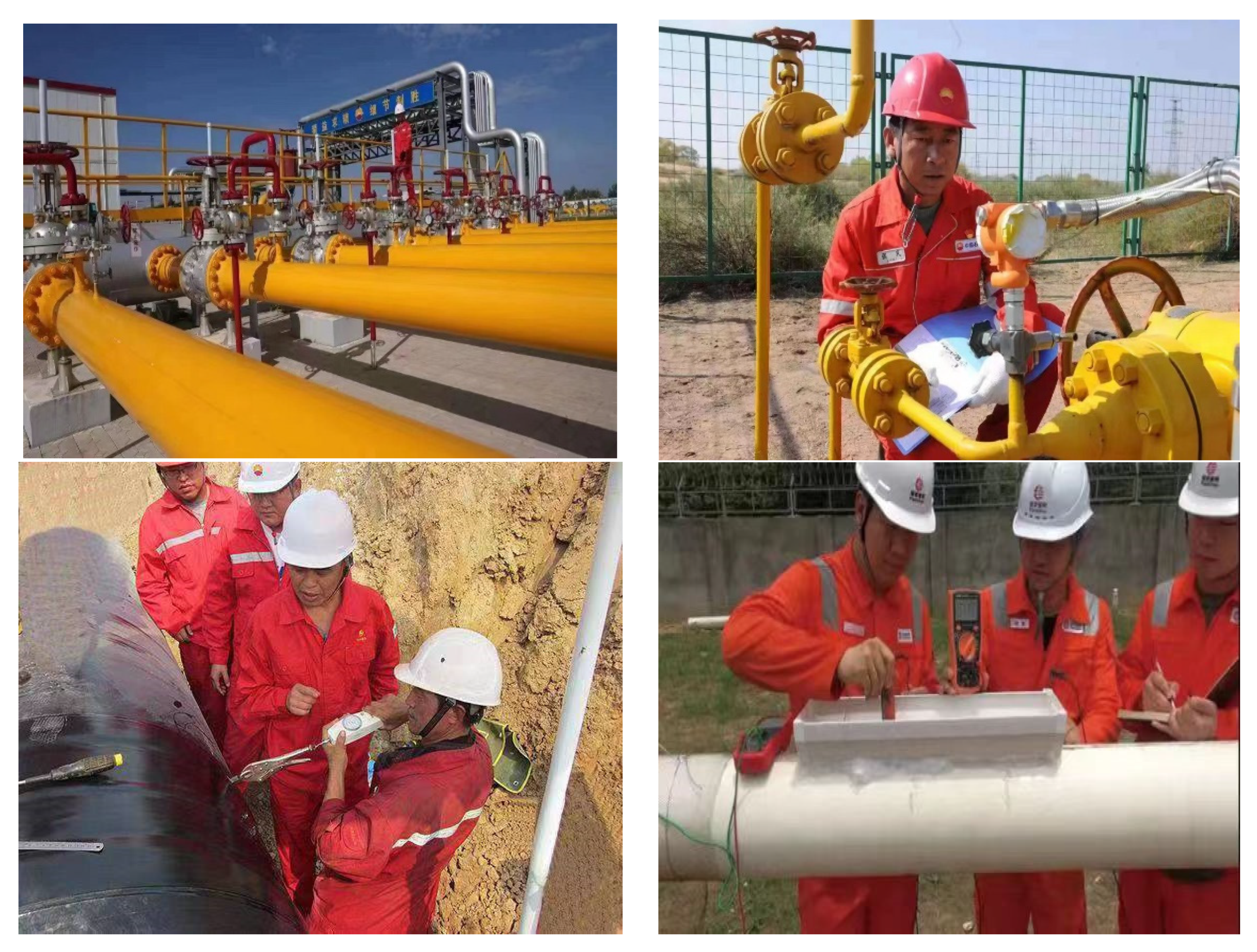
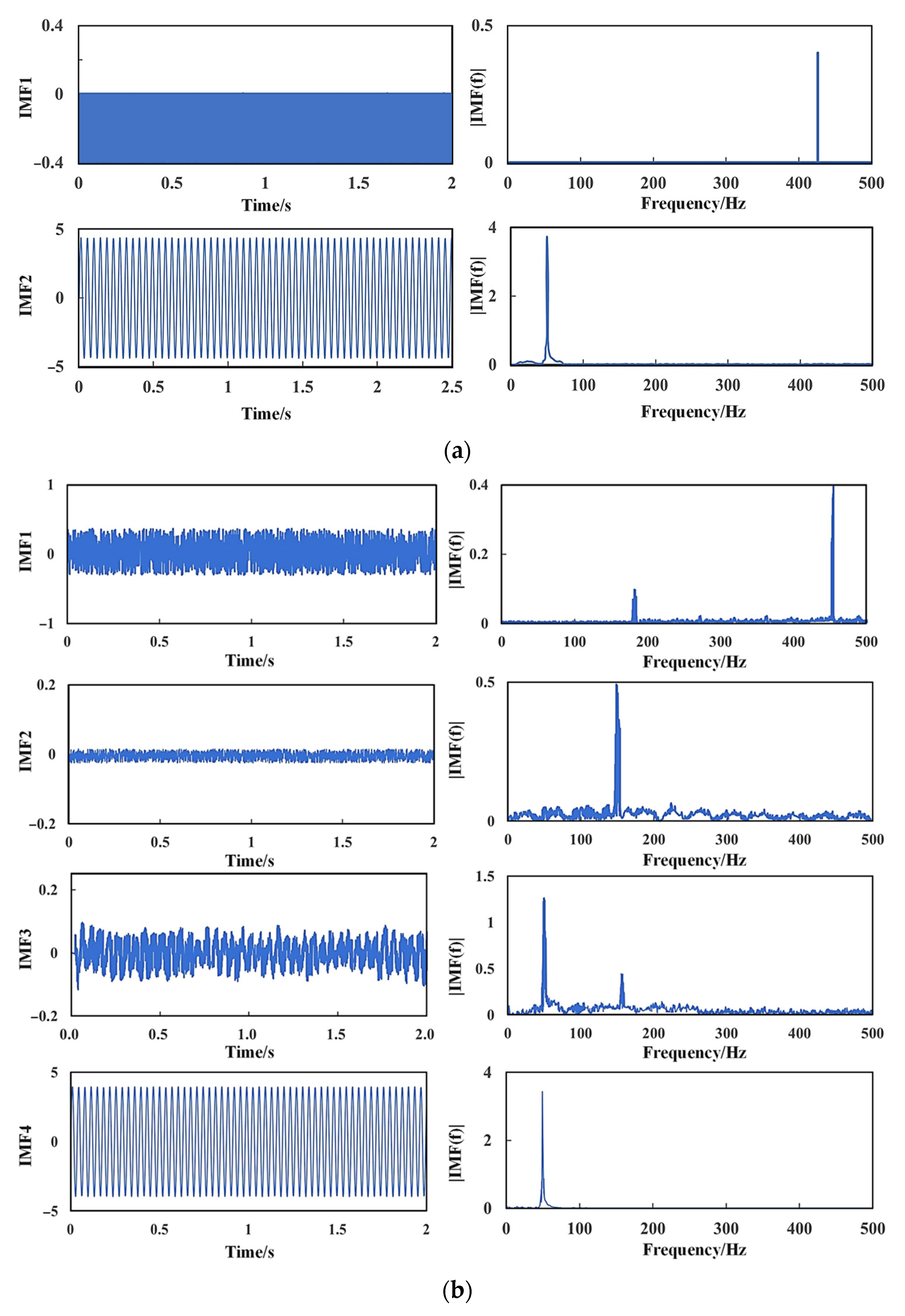
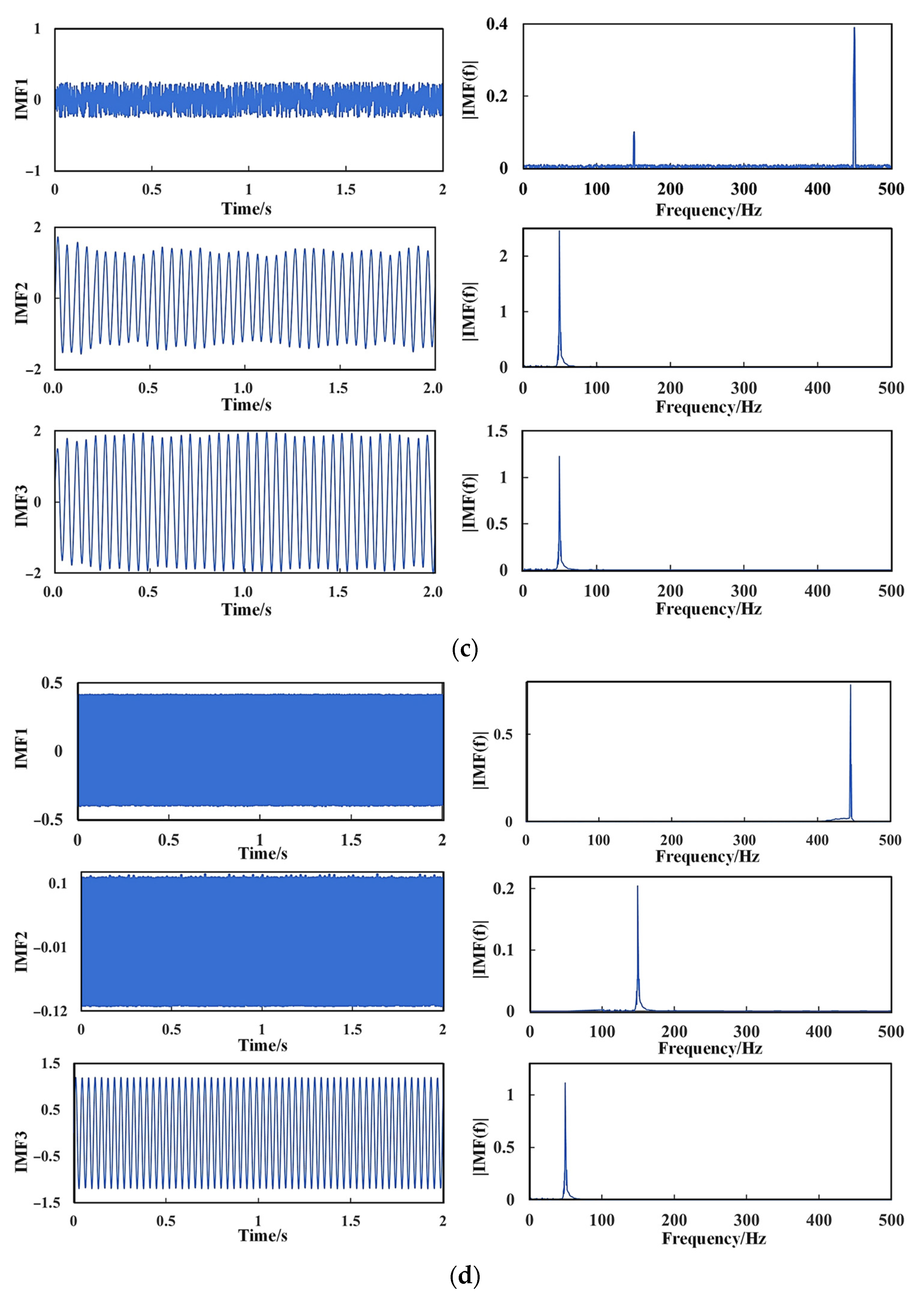
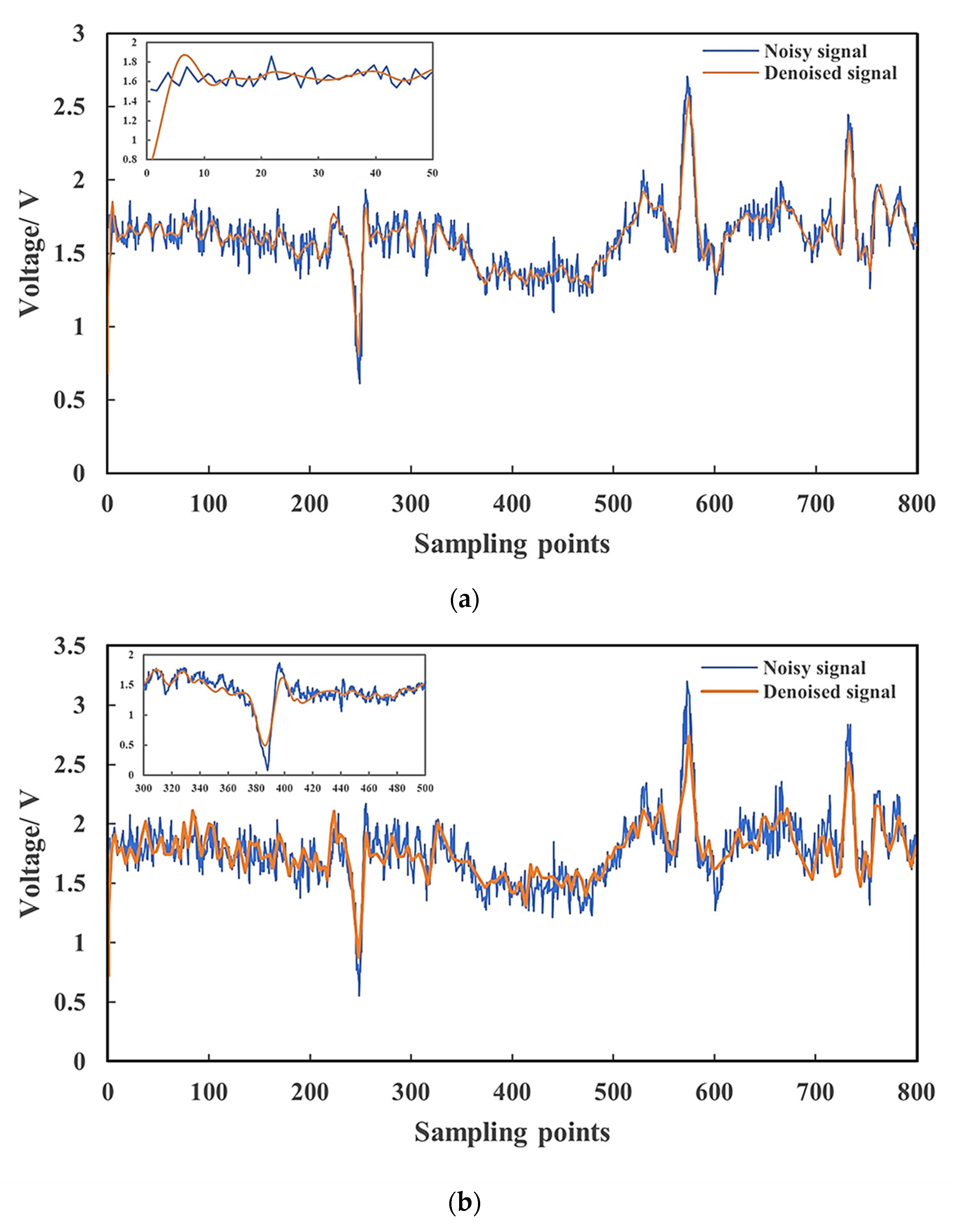
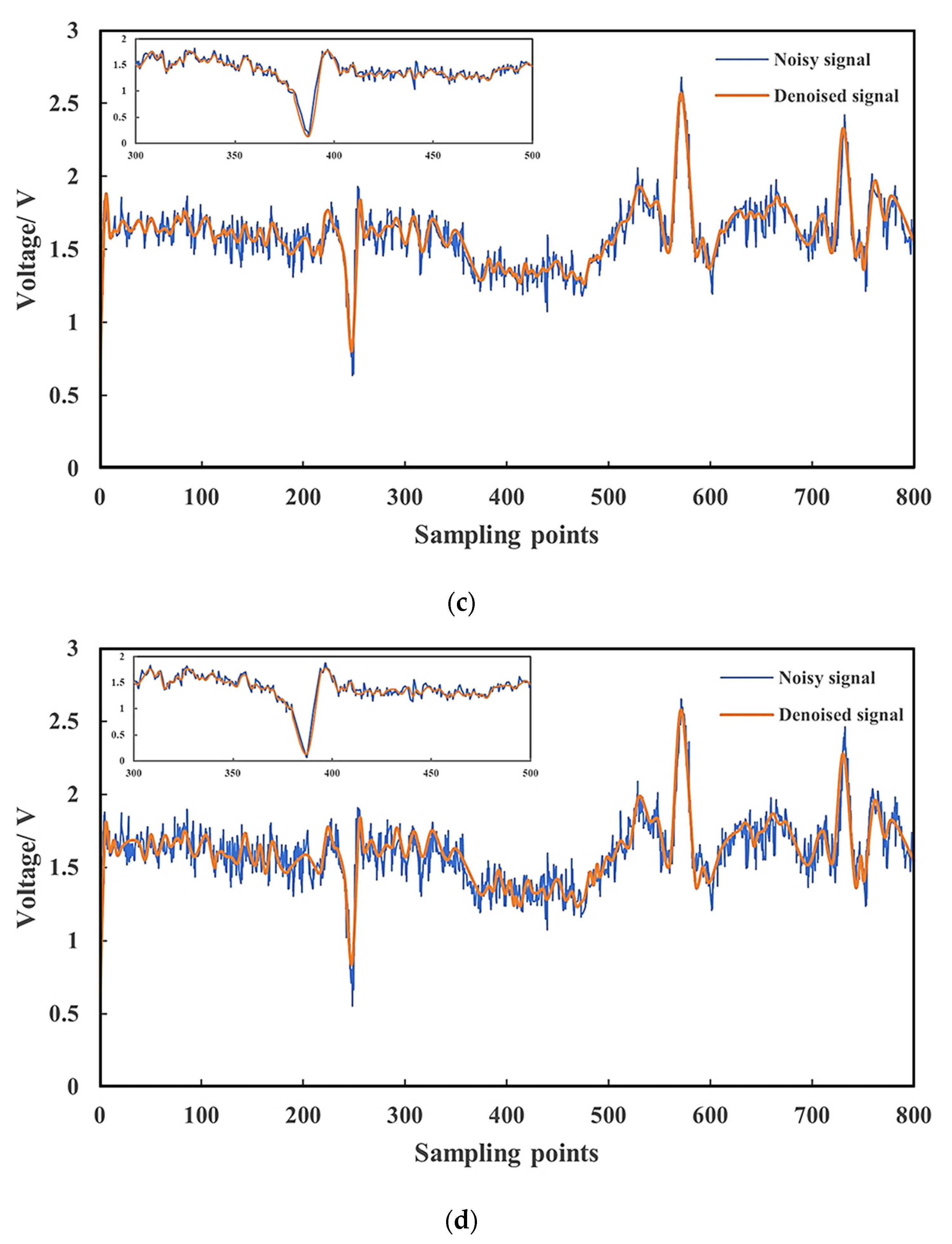

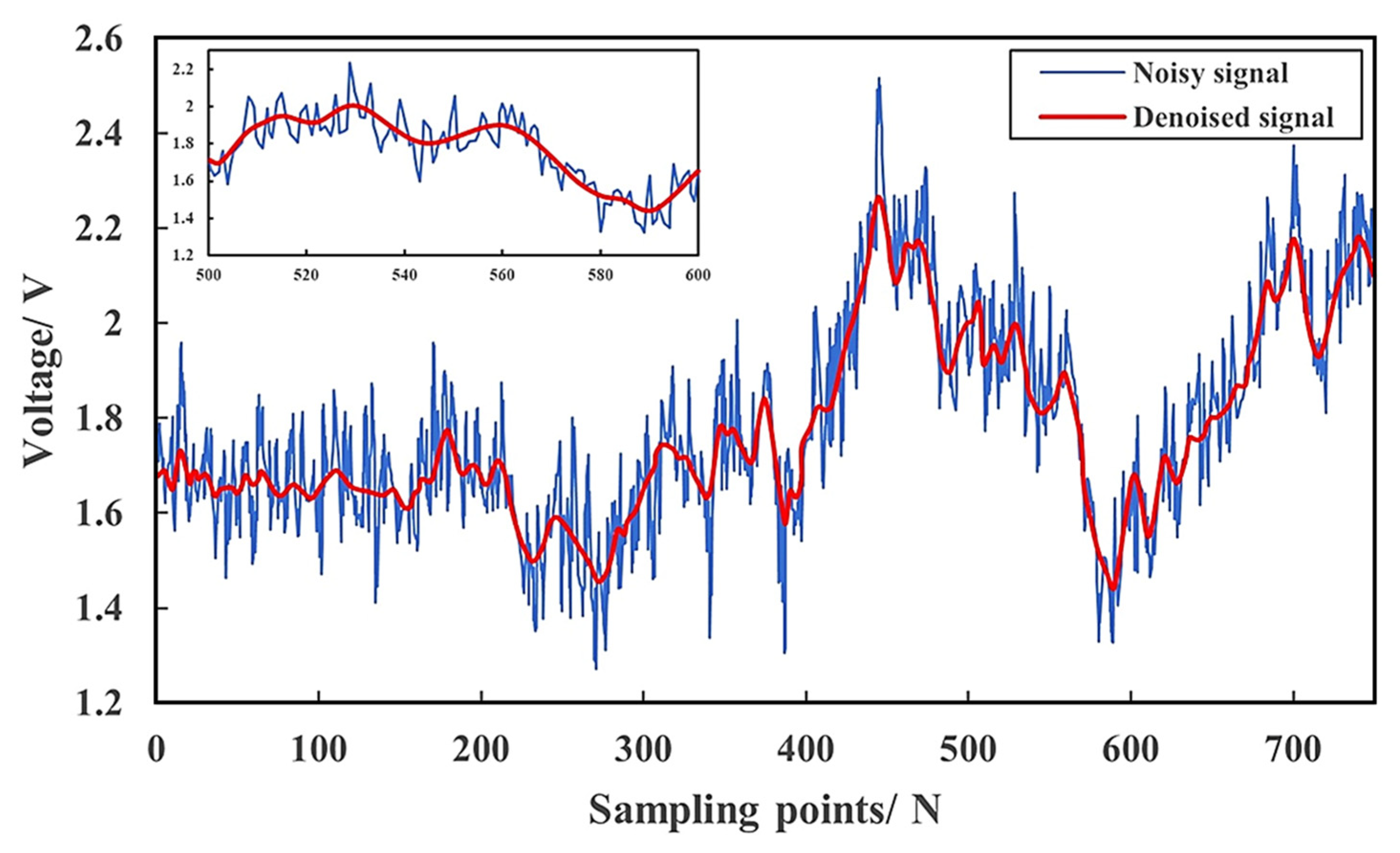
| s/s11 | s/s22 | s/s33 | |
|---|---|---|---|
| SNR/dB | 10.66 | 10.25 | 9.47 |
| MSE | 0.24 | 0.30 | 0.38 |
| s/s1 | s/s11 | |
|---|---|---|
| SNR/dB | 0.09 | 0.36 |
| Methods | SNR | RMSE |
|---|---|---|
| EMD | 21.0942 | 0.0098 |
| EEMD | 21.2068 | 0.0128 |
| CEEMDAN | 26.5030 | 0.0056 |
| ICEEMDAN-LMS | 28.4176 | 0.0039 |
Disclaimer/Publisher’s Note: The statements, opinions and data contained in all publications are solely those of the individual author(s) and contributor(s) and not of MDPI and/or the editor(s). MDPI and/or the editor(s) disclaim responsibility for any injury to people or property resulting from any ideas, methods, instructions or products referred to in the content. |
© 2023 by the authors. Licensee MDPI, Basel, Switzerland. This article is an open access article distributed under the terms and conditions of the Creative Commons Attribution (CC BY) license (https://creativecommons.org/licenses/by/4.0/).
Share and Cite
Gao, Y.; Luo, Z.; Bi, A.; Wang, Q.; Wang, Y.; Wang, X. A New Method for Evaluating Natural Gas Pipelines Based on ICEEMDAN-LMS: A View of Noise Reduction in Defective Pipelines. Appl. Sci. 2023, 13, 9670. https://doi.org/10.3390/app13179670
Gao Y, Luo Z, Bi A, Wang Q, Wang Y, Wang X. A New Method for Evaluating Natural Gas Pipelines Based on ICEEMDAN-LMS: A View of Noise Reduction in Defective Pipelines. Applied Sciences. 2023; 13(17):9670. https://doi.org/10.3390/app13179670
Chicago/Turabian StyleGao, Yiqiong, Zhengshan Luo, Aorui Bi, Qingqing Wang, Yuchen Wang, and Xiaomin Wang. 2023. "A New Method for Evaluating Natural Gas Pipelines Based on ICEEMDAN-LMS: A View of Noise Reduction in Defective Pipelines" Applied Sciences 13, no. 17: 9670. https://doi.org/10.3390/app13179670




